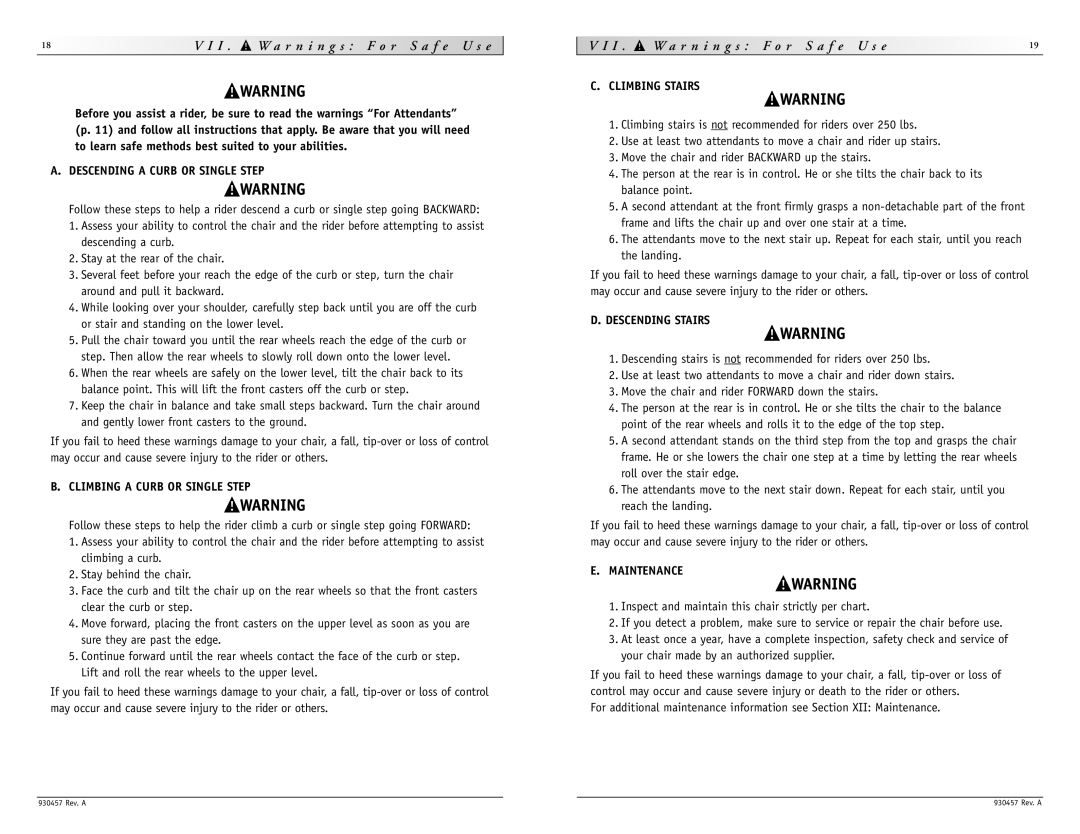M6 specifications
Sunrise Medical M6 has emerged as one of the leading models in the realm of powered wheelchairs, combining advanced technologies, user-centric design, and superior functionality. It caters to individuals with diverse mobility needs, offering a blend of comfort and performance that enhances the user experience.One of the standout features of the M6 is its exceptional maneuverability. Equipped with a tight turning radius and responsive controls, the M6 can navigate through narrow spaces effortlessly. This is particularly beneficial for users who require a wheelchair that performs well in both indoor and outdoor environments. Its compact design ensures easy movement in homes, shops, and public spaces.
The M6 utilizes state-of-the-art suspension systems, which contribute to a smooth and comfortable ride over various terrains. This feature is essential for users who often traverse uneven surfaces, as it minimizes jolts and vibrations. Coupled with solid tires, the suspension system ensures traction and stability, allowing users to engage in daily activities without discomfort.
Another vital aspect of the M6 is its customizable seating and positioning options. Users can adjust the seat depth, width, backrest angle, and height, catering to individual preferences and needs. This customization promotes better posture and comfort, essential for prolonged use. Moreover, the option for additional supportive cushions can further enhance the user’s overall well-being.
The M6 is also integrated with cutting-edge technology to improve user interactivity. The joystick control system is designed for ease of use, allowing for intuitive navigation of differing settings. Additionally, the M6 features programmable seating positions, making it easier for users to transition between various configurations with a simple touch of a button.
Durability is another hallmark of the M6. Built with high-quality materials, it is designed to withstand the rigors of daily use while providing longevity. This robustness, combined with aesthetic design choices, ensures that the M6 is not only functional but visually appealing.
In summary, the Sunrise Medical M6 is more than just a powered wheelchair; it is a testament to innovative design and user-focused technology. Its excellent maneuverability, customizable seating options, advanced suspension, and durable construction make it an ideal choice for individuals seeking independence and comfort in their mobility solutions.

